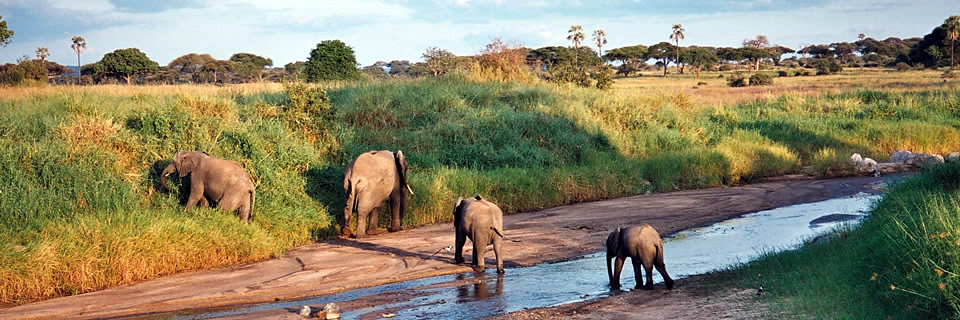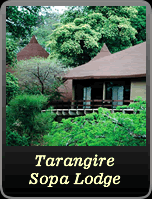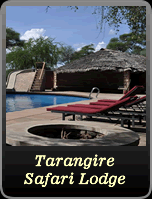
Tarangire National Park
Tarangire lies to the for south of the large open grass plains of southern Maasailand and is the best-kept secret on the northern safari circuit. Tarangire is a dry season refuge many migratory animals (elephants, wildebeest, zebra, gazelles, eland and buffalo), that spend many months of the year outside the park on traditional grazing corridors linking Tarangire with other protected areas.
At 2,600km², Tarangire is far from being the biggest of the Tanzanian parks, but it’s unrivalled landscape of open plains, dotted with thousands of baobabs, is unforgettable. About 120kms south of Arusha on the Dodoma road, Tarangire rivals the Serengeti for the size of the game herds that congregate here at peak season (June to November).
This is when many of the animals crowd around the only source of permanent water in the park, the Tarangire River. This is also the best place in Tanzania to see really big herds of elephant – up to 300 at a time. But be warned, the going can be rough and many of the tracks are impassable in the rainy season. Tarangire is another park known for its tree-climbing lions, and for its very big herds of buffalo.
This is one of Africa’s little-known gems and should be on the itinerary of all lovers of wilderness and solitude. The game numbers are staggering: 30,000 zebra, 25,000 wildebeest, 5,000 buffalo, 3,000 elephant, 2,500 Maasai giraffe and over 1,000 fringe-eared oryx (gemsbok). Predators include lion, cheetah and leopard, and birders will want to look out for the endemic ashy starling, rufous-tailed weaver and black-collared lovebird.
This park has a particularly dense wildlife population between June - October. This national park is home to thousands of elephant, and in the dry season game congregates along the river having migrated from the Masai Mara. This park is symbolised by the Baobab tree, growing in open acacia woodland. Tarangire is an ornithologists paradise rich in birds of prey and an incredible diversity of avifauna.





